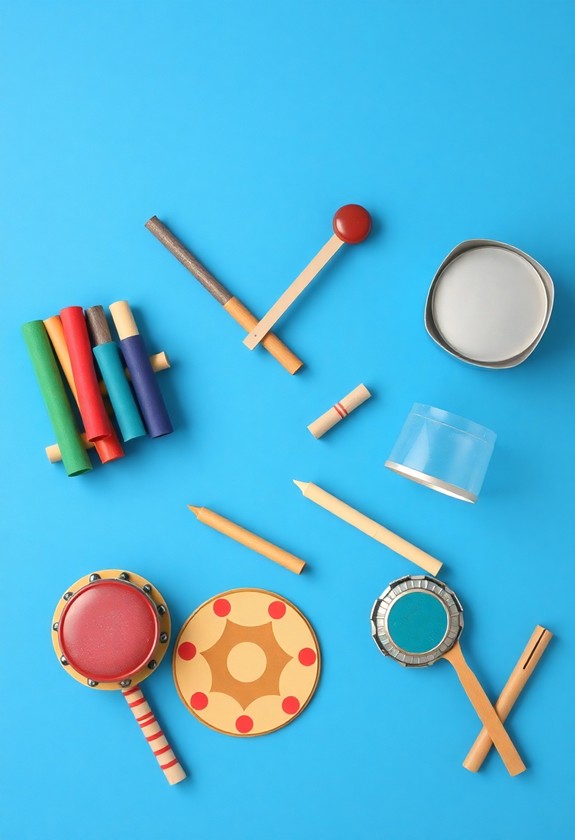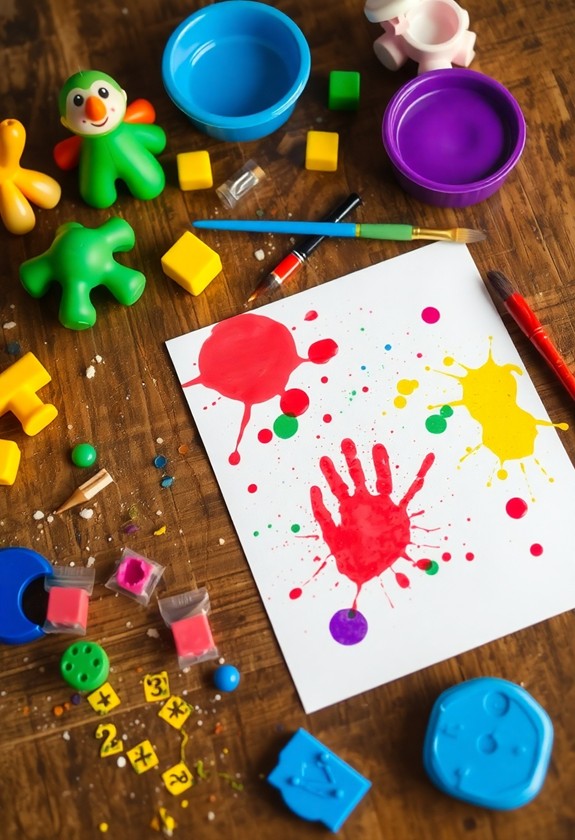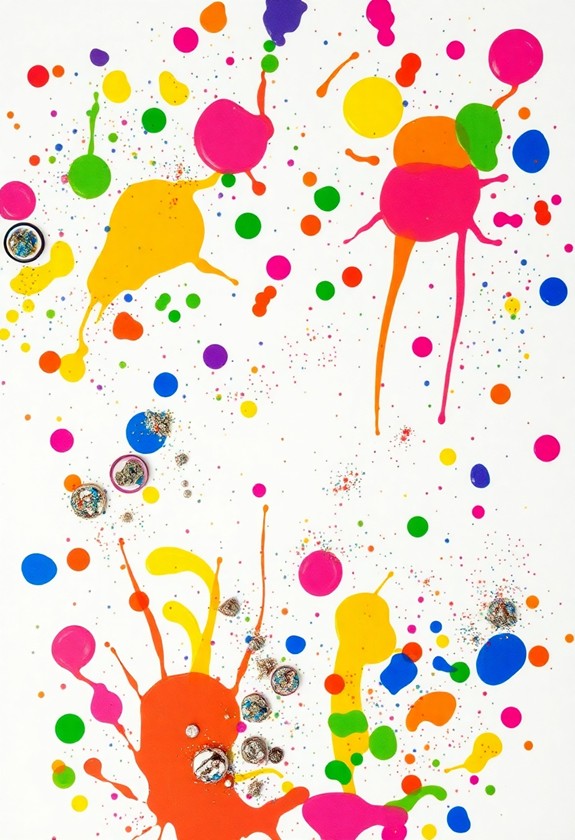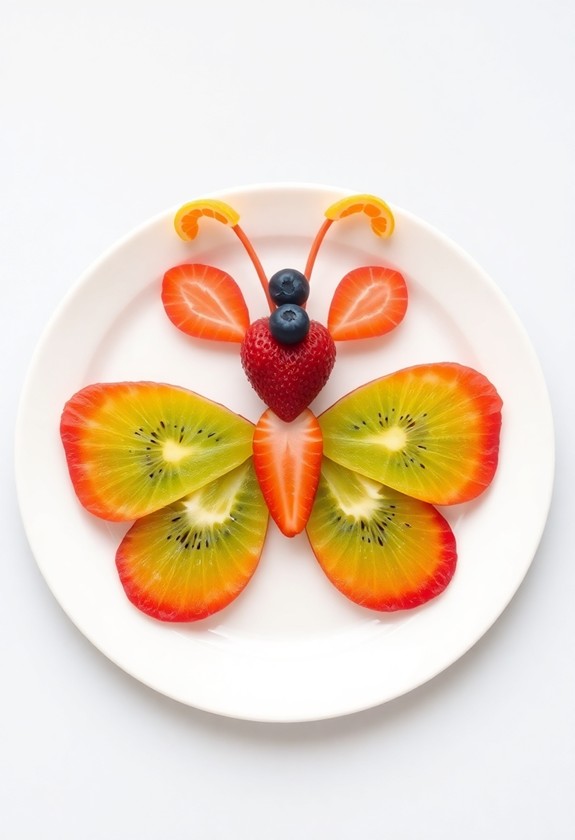Ready to release your child's creativity with sound? Try these 7 awesome art projects! Musical painting lets kids splash colors to tunes, as audio wave sculptures bring sound to life. Craft funky instrument collages or drum up masterpieces with rhythm stick art. Go on a sound scavenger hunt and turn findings into art! Watch vibrations create mesmerizing sand patterns, or build mini soundscape dioramas. These projects aren't just fun – they boost listening skills, fine motor development, and sensory exploration. Plus, they're a blast for the whole family! Jump in and uncover how these sound-inspired activities can amplify your child's artistic adventure.
Creative Highlights
- Musical Painting combines visual art with music, stimulating creativity and motor skills in children.
- Sound Wave Sculpture teaches sound physics through hands-on art creation using various materials.
- Instrument-Inspired Collages blend music and art, enhancing fine motor skills and creativity.
- Rhythm Stick Art merges drumming and painting, developing hand-eye coordination through rhythmic movement.
- Vibration Sensory Drawings use sound vibrations to create unique patterns with sand or salt.
Musical Painting
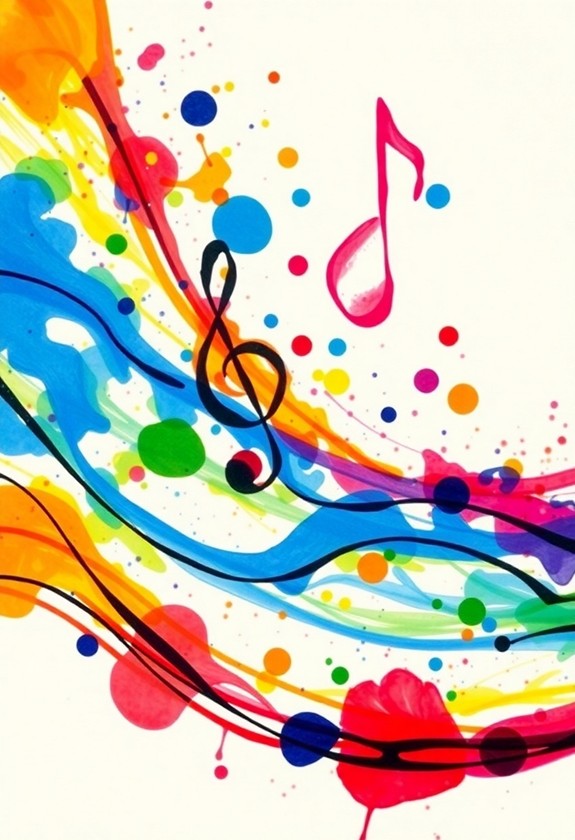
Musical painting is a fun and engaging way to combine auditory and visual arts for children. It's a blast! Here's how to do it:
- Set up your art station with paper, paints, and brushes.
- Choose some exciting tunes – classical, pop, or anything in between!
- Press play and let the music flow through your little artist's brush.
This activity is especially beneficial for toddlers aged 1-5, as it stimulates brain regions associated with creativity and motor skills. Regular engagement in such multi-sensory experiences aids in memory retention and information processing.
As the melody swirls, encourage your child to:
- Paint fast during upbeat parts
- Use slow, sweeping strokes for calmer sections
- Pick colors that match the mood of the music
The result? A masterpiece that's music to your eyes! This activity helps kids express themselves creatively as they develop listening skills. It's a great way to introduce them to different musical styles, too. So crank up the volume and let the artistic orchestra begin!
Sound Wave Sculpture
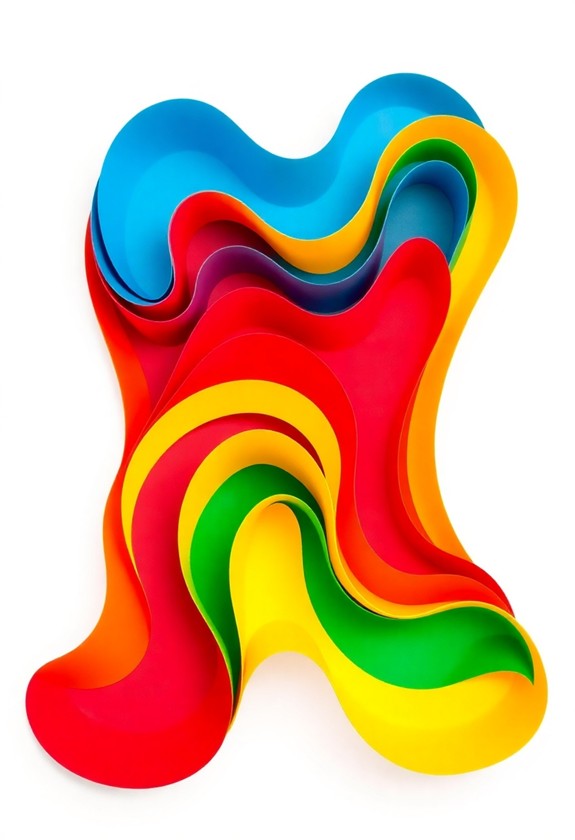
Creating sound wave sculptures offers kids a unique way to visualize and interact with audio. It's a fun project that combines science and art! You'll need wire, clay, or even pipe cleaners to bring sound waves to life. Start by playing different sounds and observing their wave patterns on a sound app. Then, shape your materials to match those patterns. This activity not only enhances creativity but likewise develops fine motor skills as children manipulate materials to form their sculptures. Wow! You've just turned invisible sound into a 3D masterpiece!
This activity isn't just artistic; it's likewise educational. Kids will learn about:
- The physics of sound waves
- How pitch affects wave shape
- The connection between music and math
- The beauty hidden in everyday noises
Get creative with your sculptures! Try making waves for your favorite song, your voice, or even animal sounds. Display your finished pieces proudly – they're conversation starters and unique decorations rolled into one!
Instrument-Inspired Collages
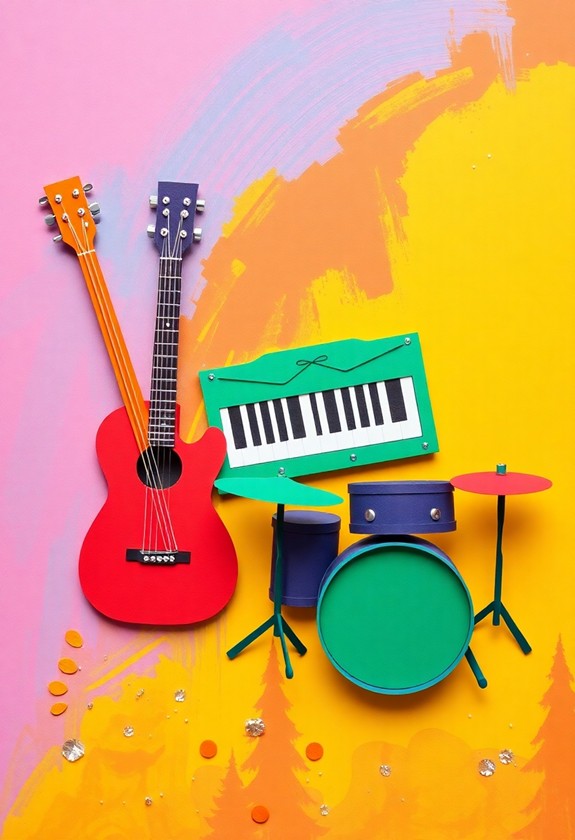
Diving into the world of instrument-inspired collages opens up a lively artistic avenue for kids to examine. It's a fun way to blend music and art! This project not only boosts creativity but furthermore develops fine motor skills through cutting and gluing, making it an excellent activity for toddlers. Here's how to get started:
- Gather materials: colorful paper, scissors, glue, and images of instruments
- Choose a favorite instrument as inspiration
- Cut out shapes that represent parts of the instrument
- Arrange and glue the pieces to create a unique collage
You can add extra pizzazz with:
- Glitter for shiny brass instruments
- Yarn for guitar strings
- Buttons for piano keys
Let your imagination run wild! Mix and match different instrument parts to create wacky new ones. How about a "guitarophone" or a "drumpet"? This project is certain to strike a chord with young artists and budding musicians alike. It's a great way to examine the shapes and colors of instruments during the creation of eye-catching artwork!
Rhythm Stick Art
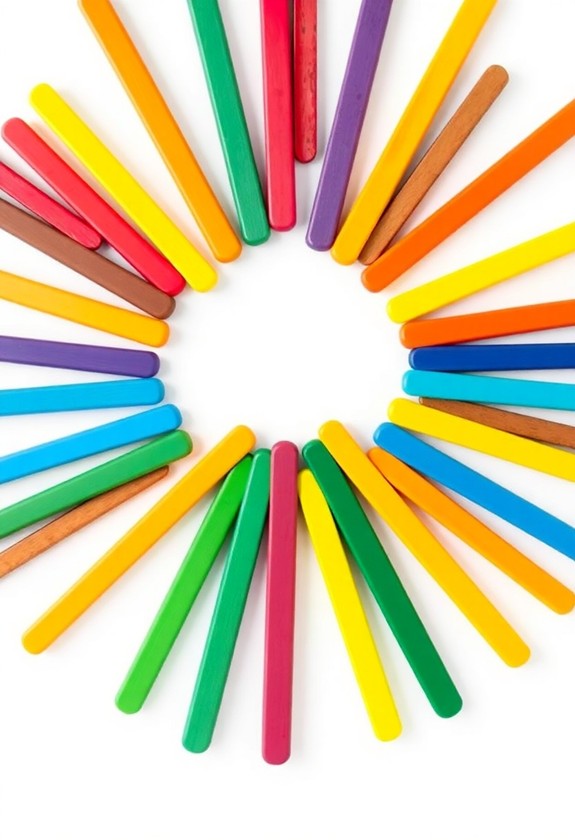
From collages, we move to a more hands-on approach with rhythm stick art. Get ready to make some noise and create colorful masterpieces! Grab your rhythm sticks (or wooden dowels) and dip them in paint. Now, tap and roll them on paper to the beat of your favorite songs. Watch as the sticks sway across the page, leaving behind lively patterns and textures. It's like drumming and painting rolled into one fun activity!
Here's why kids love rhythm stick art:
- It's messy and exciting!
- They can express themselves through music and art
- It helps develop hand-eye coordination
- The results are always unique and surprising
Don't have rhythm sticks? No problem! Use pencils, chopsticks, or even twigs from your backyard. Let your imagination run wild and create a melody of colors on paper!
Sound Scavenger Hunt Creations
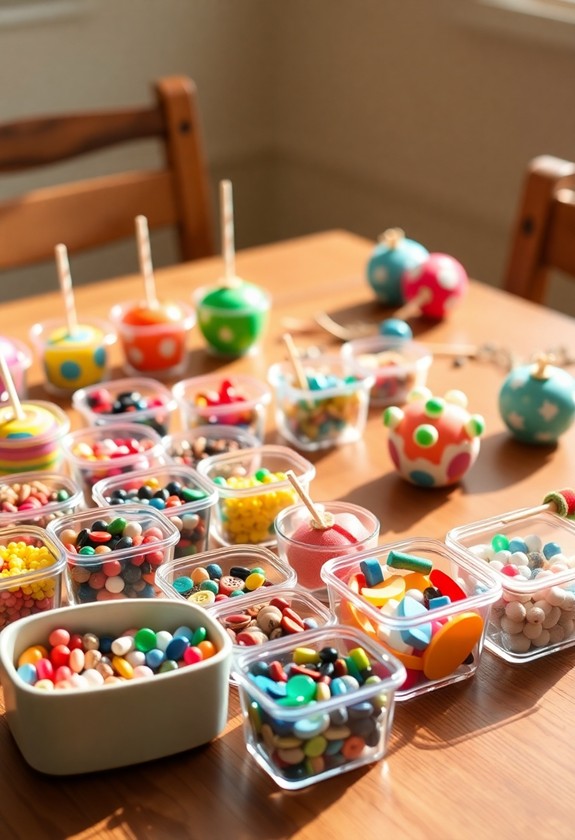
A sound scavenger hunt takes art projects to a whole new level of excitement and creativity. It's time to investigate your world with your ears wide open! Grab a notebook and pencil, then head outside to listen for interesting sounds. Write down or draw what you hear: birds chirping, cars honking, leaves rustling. Back inside, it's time to get crafty!
Turn your sound findings into amazing art:
- Draw a picture inspired by each sound
- Create a collage using images that represent the noises
- Build a 3D sculpture that captures the essence of a sound
Don't forget to add fun labels or captions to your masterpieces. You can even record the actual sounds to play alongside your art show. What a noise-tastic way to combine listening skills and creativity! Your ears and imagination will be buzzing with ideas!
Vibration Sensory Drawings
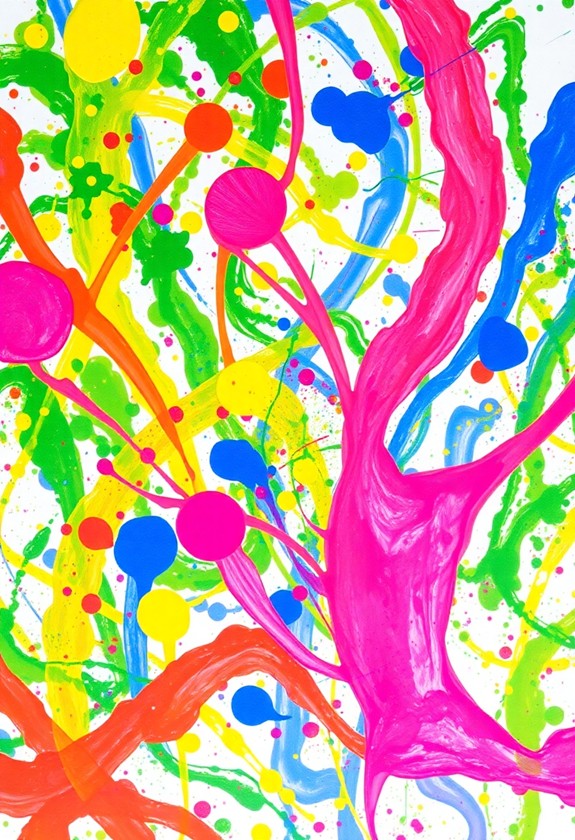
Get ready to feel the rhythm with vibration sensory drawings! This fun project lets you create art using sound vibrations. Place a sheet of paper on a baking tray, then sprinkle some sand or salt on top. Now, crank up the tunes and watch the magic happen! As the music plays, the vibrations will make the sand move and create unique patterns.
Try different songs and see how the patterns change. You'll be amazed at how each melody creates its own special design. It's like the music is painting for you!
- Feel the music come alive before your eyes!
- Watch in wonder as sound becomes art!
- Experience a whole new way of "seeing" your favorite songs!
- Create one-of-a-kind masterpieces with every beat!
Soundscape Dioramas
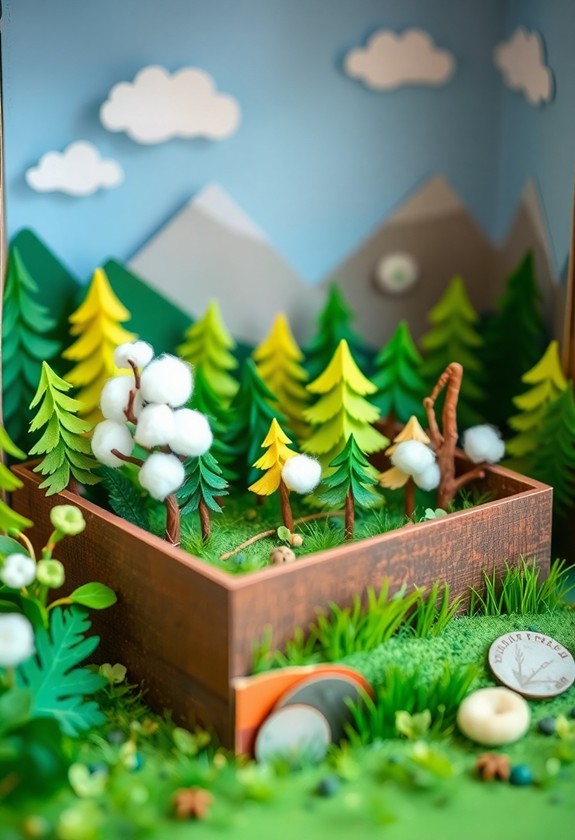
Immerse yourself in the world of soundscape dioramas! These incredible 3D creations bring audio environments to life. You'll love crafting mini-scenes that represent different sound atmospheres!
Here's how to make your own:
- Choose a soundscape: beach, city, forest, or any place with unique sounds.
- Gather materials: shoe box, craft supplies, and tiny objects.
- Create the scene: Paint the background and add 3D elements.
- Label sound sources: Use small flags to mark where sounds come from.
For extra fun, record actual sounds from your chosen environment. Play them during showcasing your diorama – it's like a sound-sational field trip in a box!
Want to amp it up? Try these ideas:
- Add LED lights for a glowing effect
- Use cotton for clouds or smoke
- Include moving parts for dynamic sounds
Get ready to hear the applause for your a-sound-ing creation!
Curious Little Questions
What Age Group Are These Sound-Inspired Art Projects Most Suitable For?
You're in for a treat! These sound-inspired art projects are perfect for young kids, typically aged 3 to 8. They're ideal for preschoolers and early elementary students who love to investigate and create. At this age, kids are bursting with curiosity and energy, making them super receptive to fun, hands-on activities. Plus, they're developing fine motor skills and sensory awareness – perfect for these projects! So, grab your little artists and get ready for some noisy, messy, and totally awesome art-making!
How Can These Projects Be Adapted for Children With Hearing Impairments?
You might think sound-inspired art isn't for kids with hearing impairments, but you'd be wrong! There are so many ways to adapt these projects. Try using:
- Vibrations: Let kids feel music through speakers or balloons
- Visual cues: Use colorful lights that sync with sounds
- Tactile elements: Create textured art based on sound waves
Don't forget to incorporate sign language and visual instructions. Get creative! With a little tweaking, these projects can be just as fun and meaningful for all children. Let's make art accessible for everyone!
Are There Any Safety Concerns When Working With Sound-Inspired Art Materials?
You bet there are safety concerns! Regarding sound-inspired art materials, you've got to be on your toes. Here's the scoop:
- Watch out for small parts that could be choking hazards
- Keep an eye on noise levels – protect those precious ears!
- Be careful with materials that might splatter or spray
- Supervise the use of any electrical equipment
Can These Projects Be Incorporated Into a School's Music or Art Curriculum?
You'll find these projects fit like a glove in school curriculums. They're music to teachers' ears! Here's why:
- Blend art and music effortlessly
- Encourage creativity and critical thinking
- Teach sound principles in a fun way
- Promote teamwork and collaboration
Plus, they're budget-friendly and adaptable for different ages. You can even create a "sound spectacular" showcase! Just imagine the buzz in the hallways. So, go ahead and strike a chord with these projects – they're bound to be a hit!
What Are the Cognitive Benefits of Engaging in Sound-Inspired Art Activities?
You'll love the incredible brain-boosting benefits of sound-inspired art! These activities are like a workout for your mind. They'll sharpen your focus, spark creativity, and improve memory. Plus, you're in for a treat: improved problem-solving skills and better emotional expression! It's a win-win situation. Your senses will work together, creating amazing connections in your brain. And guess what? You'll have a blast during developing spatial awareness and fine motor skills. It's cognitive growth, disguised as fun!

